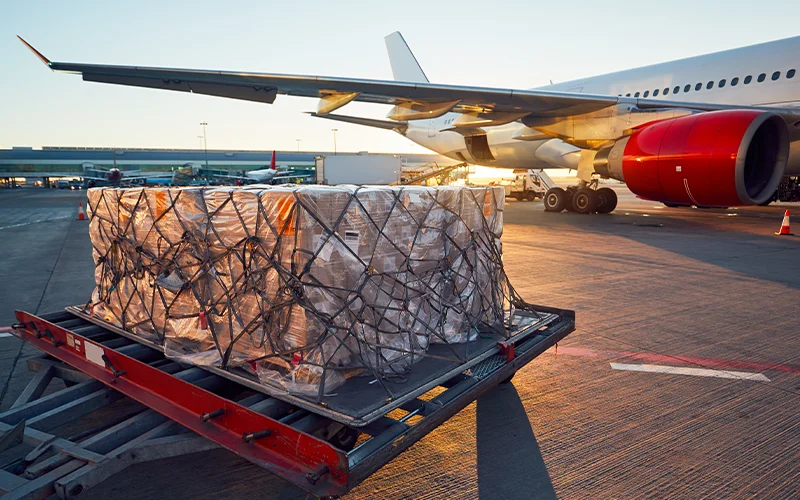Packaging & Transportation Desiccant
.webp)
Buy Packaging & Transportation Desiccant
Industry Challenges
Packaging Integration & Integrity
- Desiccants need highly sealed packaging to work well and are problematic for guarding against moisture, as they do not maintain consistent barrier properties across packaging methods, like IBC tanks compared to flexible pouches. A compromised seal or leakage will not control moisture and will risk damaging the product (such as corrosion or mold).
Sustainability Pressures
- Traditional silica gel packets are being challenged due to non-biodegradable and plastic components. Changes in regulations (for example, EU PPWR) and consumer preference are pushing for greener solutions (e.g., bio-based/recyclable desiccants), yet finding product alternatives that perform the same has been a major barrier.
Regulatory Fragmentation
- Meeting changing global regulations (e.g., EU food-contact regulations for recycled items, hazardous goods packaging rules) is challenging. The use of different definitions (e.g., "recycling" in consideration of chemical recycling) provides gaps in opportunities for innovative and applied desiccant materials.
Performance vs. Cost Balance
- While high-purity/moisture-sensitive desiccants (e.g., indicating silica gel) offer superior protection, their adoption conflicts with industry-wide cost-reduction and lightweighting goals. Balancing efficacy with minimal material use is critical.
Why Choose Our Desiccants

Advanced Moisture Control
Our desiccants maintain precise humidity levels using superior adsorption technology.

Global Compliance Guarantee
All formulations meet stringent international safety standards for cross-border shipments.

Customizable Protection Formats
Tailored solutions fit diverse packaging configurations from small parcels to shipping containers.

Environmental Resilience
Performs reliably under extreme temperature fluctuations and multi-modal transit stresses.
Usage
Sea Container Transportation
Usage Overview
Deployed in shipping containers using suspension systems to combat extreme humidity fluctuations and condensation ("container sweat") during long ocean voyages across climate zones.

Key Advantages
- Neutralizes humidity buildup from diurnal temperature cycling
- Absorbs moisture released by organic cargoes
- Prevents metal corrosion on container walls and goods
- Maintains dry conditions during port delays
Related Products
High-Humidity Terrestrial Transport
Usage Overview
Integrated into truck/train cargo spaces and enclosed trailers operating in tropical regions or rainy conditions to counteract ambient moisture infiltration.

Key Advantages
- Counters frequent door-opening humidity ingress
- Protects against road-spray moisture penetration
- Mitigates mold formation on porous materials
- Maintains packaging integrity under vibration
Air Cargo Transport
Usage Overview
Placed in airfreight ULDs (Unit Load Devices) and temperature-sensitive cargo holds to manage rapid pressure/temperature shifts causing moisture condensation.

Key Advantages
- Compensates for lower air pressure at altitude
- Prevents micro-condensation on cold surfaces
- Protects hygroscopic materials from sudden humidity changes
- Reduces fogging on optical equipment
Long-Term Storage Warehousing
Usage Overview
Distributed throughout palletized goods in high-humidity warehouses or temporary storage facilities to create localized dry zones.

Key Advantages
- Prevents "dry spot" failures in stacked goods
- Counteracts seasonal humidity variations
- Protects against concrete floor moisture wicking
- Maintains consistent dryness during ventilation
Multi-Modal Transit Protection
Usage Overview
Embedded in transferable packaging units designed to maintain continuous dryness during shipments involving sea-truck-rail mode changes and temporary staging.

Key Advantages
- Maintains protection during container-to-warehouse transfers
- Adapts to variable climate exposure in transit hubs
- Compensates for ventilation gaps during re-palletizing
- Resists physical damage from handling impacts
FAQ
Packaging & Transportation Desiccant
Silica gel desiccants are necessary to protect products in transit and storage. Silica gel desiccants are packaged in breathable sachets or canisters, and manage humidity in shipping containers, cartons, and crates. Silica gel absorbs moisture in the ambient air, and prevents condensation, mold, metal corrosion, and damage to moisture sensitive materials. Silica gel is perfect for electronics, machinery, art, and paper products, to ensure items arrive in the right condition no matter what climate change may have occurred during the logistics of global transport.
Electronics Industry
Silica gel is well known for its moisture control properties in electronic manufacturing and storage. Proper protection of sensitive components is critical, especially in packaging of items such as circuit boards, semiconductors, or optical devices. By using silica gel in sealed packages, or sealed cabinets, electronics are kept in low-humidity environments. This reduces the risks of unforeseen damage to components from oxidation, electrical shorts, and performance failures of any kind. The properties of silica gel, non-corrosive, dust-free, and safe for direct contact with delicates parts, ensures safe shipping and handling from factoryels in an unopened condition.
Pharmaceutical Industry
Silica gel provides vital moisture prevention in medicine bottles, diagnostic kits and as a component of medical device packaging. Silica gel satisfies FDA and pharmacopeia requirements and protects tablets, capsules, and laboratory reagents from both moisture-driven degradation and elevated moisture levels. Importantly, silica gel acts to stabilize humidity levels in sealed environments extending shelf-life, sterility, and therapeutic effectiveness or viability. Silica gel packets not only work well to smooth out humidity changes, but they are also transparent which allows a visual inspection. Furthermore, cobalt-free silica gel packets pose no toxicity issues in deliberately sensitive applications.
Food Industry
Silica gel provides vital moisture prevention in medicine bottles, diagnostic kits and as a component of medical device packaging. Silica gel satisfies FDA and pharmacopeia requirements and protects tablets, capsules, and laboratory reagents from both moisture-driven degradation and elevated moisture levels. Importantly, silica gel acts to stabilize humidity levels in sealed environments extending shelf-life, sterility, and therapeutic effectiveness or viability. Silica gel packets not only work well to smooth out humidity changes, but they are also transparent which allows a visual inspection. Furthermore, cobalt-free silica gel packets pose no toxicity issues in deliberately sensitive applications.
Related Blog




